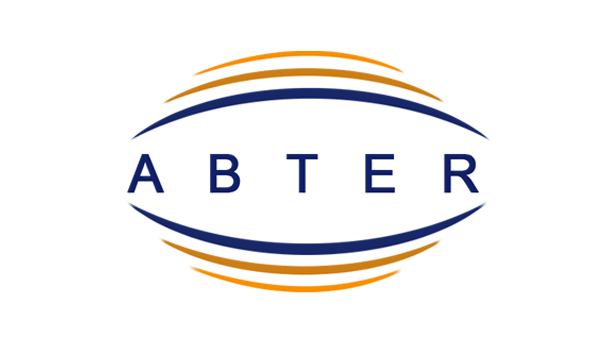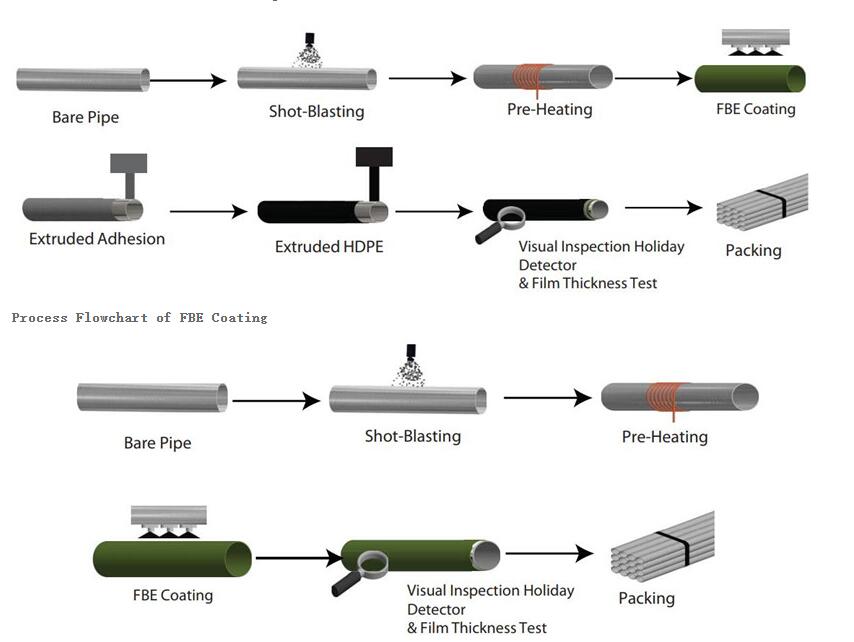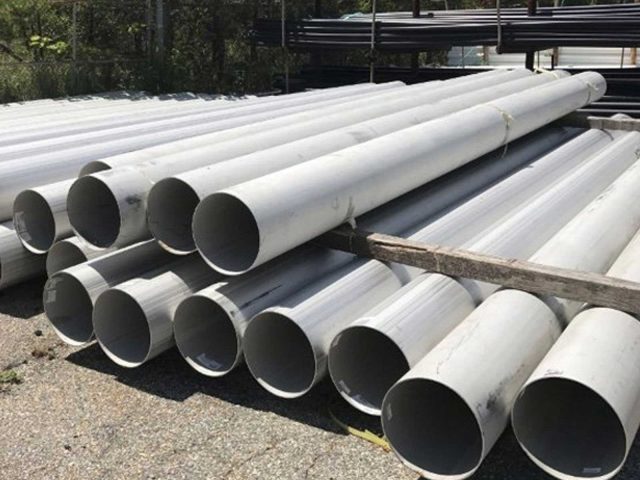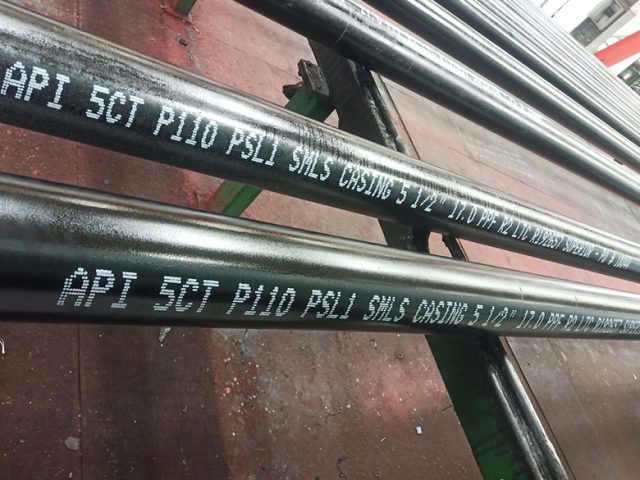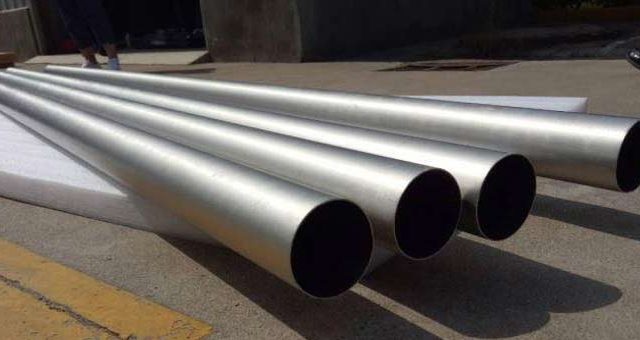2PE/3PE Anticorrosive Coated Pipe
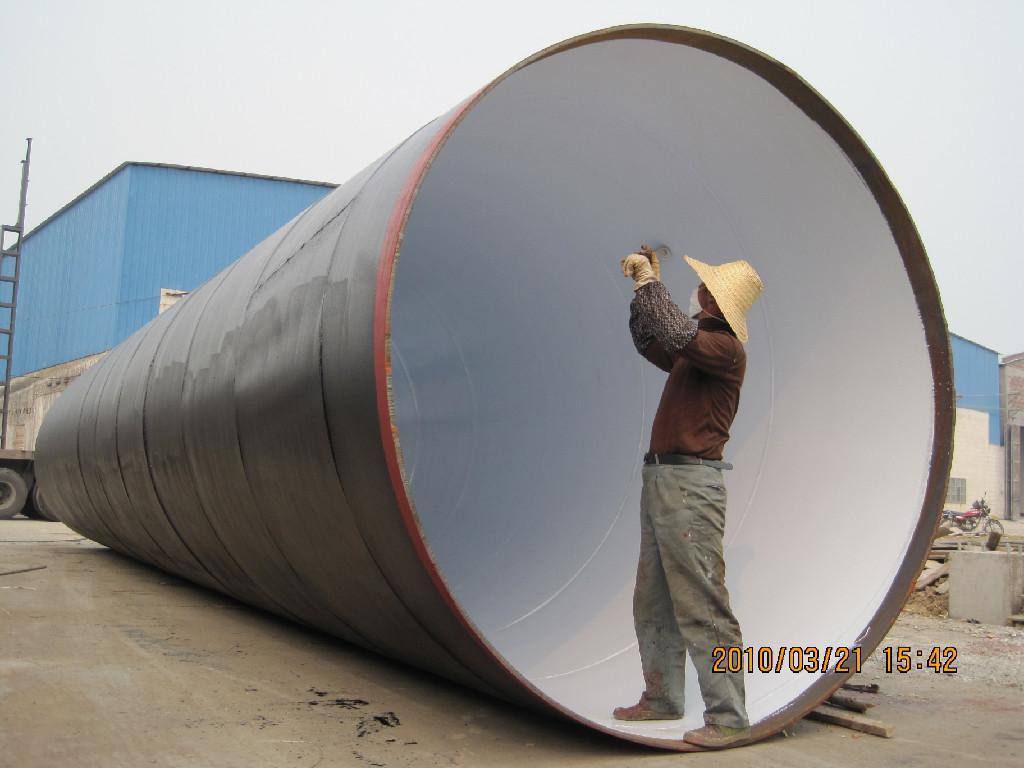
What is the 2PE/3PE Anticorrosive Coated Pipe?
2PE and 3PE refers to two-layer and three-layer polyethylene coating applied on steel pipes. They are both types of anti-corrosive treatment given to steel pipes to protect them from rust and other forms of corrosion. These coatings are particularly useful for buried or submerged pipes that are exposed to moisture and other corrosive elements.
2PE (Two-layer Polyethylene)
The 2PE anti-corrosion steel pipe consists of two layers:
- First Layer: The first layer is an epoxy powder (FBE> 100um). This layer offers good adhesion and high resistance to cathodic disbondment.
- Second Layer: The second layer is an adhesive (AD) layer (from 170um to 250um). This layer acts as a binding agent between the epoxy powder and the top layer of polyethylene.
3PE (Three-layer Polyethylene)
The 3PE anti-corrosion steel pipe involves these three layers:
- First Layer: The first layer is an epoxy powder (FBE> 100um).
- Second Layer: The second layer is an adhesive (AD) layer (from 170um to 250um).
- Third Layer: The third layer is a polyethylene (PE) layer (from 1.8mm to 3.7mm). This layer provides excellent protection against mechanical damage and also provides resistance against UV radiation, chemicals, and moisture.
Application
2PE/3PE coated steel pipes are widely used for water transmission, oil and gas pipeline, chemical process, and in the infrastructure development industry where the pipes are exposed to harsh environments.
Benefits
The benefits of 2PE/3PE coating include:
- Excellent protection against corrosion: The coating prevents direct contact of the steel with the soil and water, thereby preventing corrosion.
- Increased lifespan: As the coating protects the pipe from corrosion, it significantly increases the lifespan of the pipeline.
- Cost-effective: The 2PE/3PE coating process is cost-effective as it saves the cost of replacing the pipeline frequently due to corrosion.
- Resistant to high temperatures: The 2PE/3PE coating can withstand a broad range of temperatures, making it suitable for different climatic conditions.
Limitations
Despite its benefits, there are also some limitations:
- Application process: The process of applying the 2PE/3PE coating is complex and requires specialized equipment and trained personnel.
- Surface preparation: The surface of the pipe must be thoroughly cleaned and prepared before the coating can be applied, which can be time-consuming.
Despite these limitations, 2PE and 3PE coatings continue to be popular choices in industries where long-term pipe durability is a necessity.
Application:Used for for natural gas, petroleum, water & sewage, and pipe systems
- Specification:OD: 219mm~2020mm
WT: 5mm~25mm
LENGTH: 4mtr, 6mtr, 12mtr, 18mtr, 21mtr
Grade: Gr. B, X42, X46, X52, X60, X65, X70, X80; Q235B; Gr. C;
Standard: API 5L (PSL1, PSL2); GB/T 9711.1;
Coating Standard:DIN 30670, DIN 30671, DIN 30678, SY/T0413-2002 etc.
Pipe Type: Submerged Arc Welded (LSAW/SSAW), HSAW, Electrci Resistance Welded
Ends:Plain,Beveled, Thread With Couplings Or Sockets; Plastic Caps And Steel Rings Can Be Provided if possible
Certificate: Certificate: API 5L, API 5CT. ISO 9001; CE and so on.
Surface:Two Layer Polyethylene Coating (2mm~4.5mm)
Packing:Waterproof Paper wrapped, Steel Strips bundled, two tags on each bundle
Coating Material : Epoxy Powder, Adhesion, Polyethylene Or Polypropylene, Cement Inside
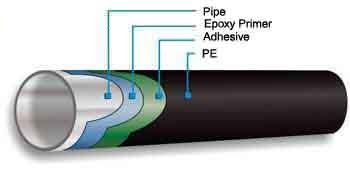
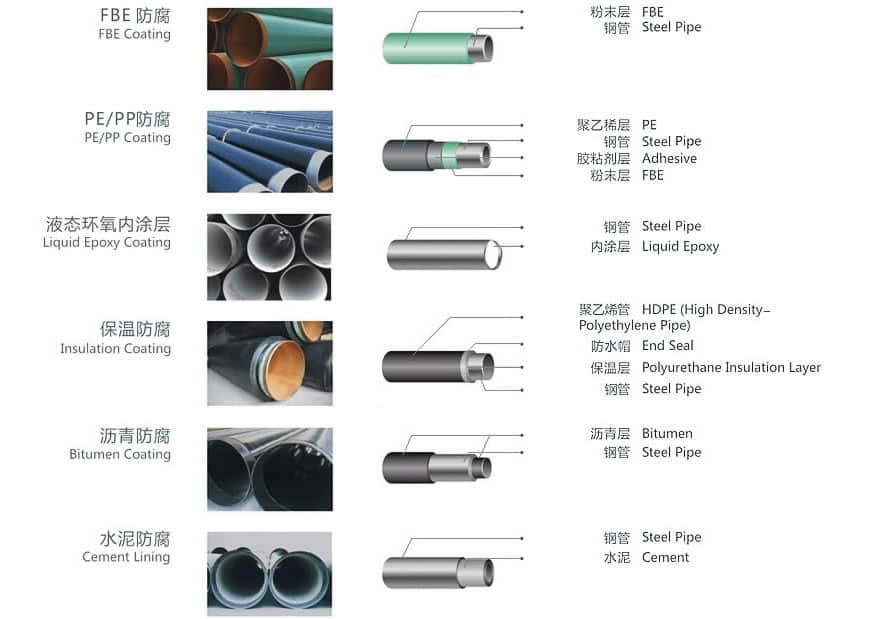
3 PE coating steel pipe can be also used in urban fuel gas piping system, storage tanks and groove piping system, protecting pipe in electricity and communication industries and water piping systems.
3PE anti-corrosion pipe three-tier structure:
the first layer of epoxy powder (FBE> 100um), the second adhesive (AD) 170-250um, the third layer of polyethylene (PE) 2.5-3.7mm.
Three of the integration, and steel pipe with a good solid coating. Diameter of Φ159-Φ1220.2PE pipe anti-corrosion two-story structure, the first layer adhesive (AD), the second layer of polyethylene (PE), two kinds of integration.
Coating Material: Epoxy Powder, Adhesion, Polyethylene Or Polypropylene, Cement Inside
3PE anti-corrosion consists of three layers of structure
-The first layer of epoxy powder is greater than 100Um
-The second layer of adhesive, (AD) 170-250um.
-The third layer of polyethylene (PE) 1.8-3.7mm.2PE anti-corrosion (two-layer polyethylene) structure
-The first layer of adhesive, (AD) 170-250um.
-The second layer of polyethylene (PE) 1.8-3.7mm3PE Coating Steel Pipe/2PE Coating Steel Pipe:
-Coating Material: Epoxy Powder, Adhesion, Polyethylene Or Polypropylene, Cement Inside
-Standard: API 5L (PSL1, PSL2); GB/T 9711.1;
-Grade: Gr. B, X42, X46, X52, X60, X65, X70, X80; Gr. C;
-The third party, SGS, BV, can be accepted.2PP PRESERVATION:
PP anti-corrosion pipe two-story structure: the first layer adhesive (AD), the second layer of polypropylene (PP), two kinds of integration, three layers thick with the same PP.
3PP PRESERVATION:
PP three-tier structure of anti-corrosion pipeline:
-The first layer of epoxy powder (FBE50 – 100um),
-The second adhesive (AD) 250 – 400um,
-The third layer of polypropylene (PP) 1.4 – 4.0mm.
Three of the integration, and steel pipe with a good solid coating, Coating temperature up to 110 degrees.
-Diameter of Φ159 – Φ1440
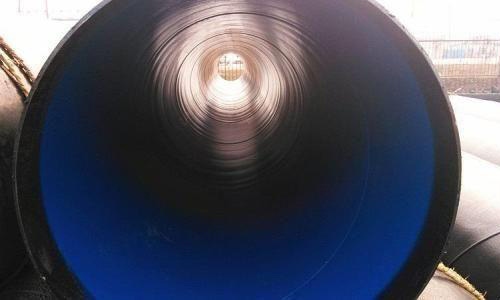
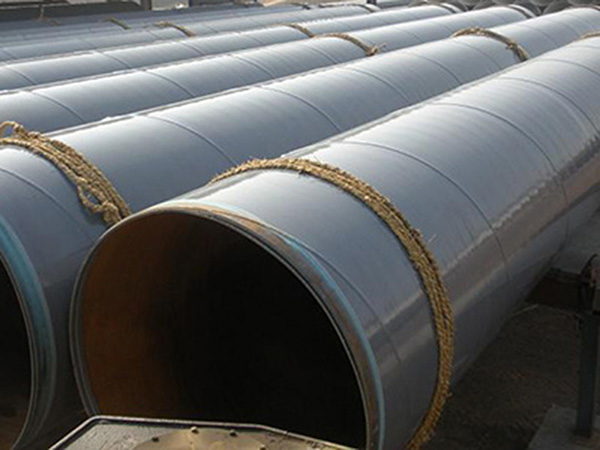
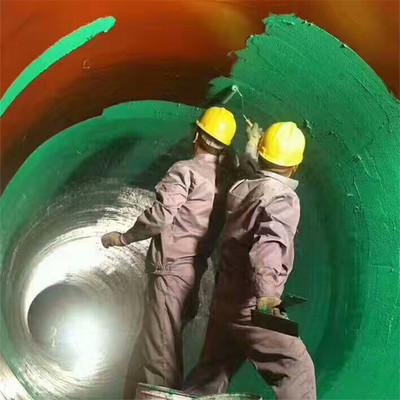
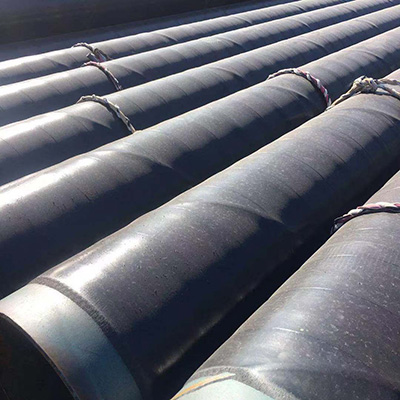
 Specification
Specification- THICKNESS OF 3LPE COATING ON STEEL PIPES
minimum 125 µm Epoxy layer thickness
minimum 150 µm copolymer layer thickness
minimum thickness of 1.8 mm to 4.7 mm polyethylene or polypropylene layer
Minimum total layer thickness range
M kg/m Layer thickness in mm Class A1 Class A2 Class A3 Class B1 Class B2 Class B3 Class C1 Class C2 Class C3 M ≤ 15 1,8 2,1 2,6 1,3 1,8 2,3 1,3 1,7 2,1 15 < M ≤ 50 2,0 2,4 3,0 1,5 2,1 2,7 1,5 1,9 2,4 50 < M ≤ 130 2,4 2,8 3,5 1,8 2,5 3,1 1,8 2,3 2,8 130 < M ≤ 300 2,6 3,2 3,9 2,2 2,8 3,5 2,2 2,5 3,2 300 < M 3,2 3,8 4,7 2,5 3,3 4,2 2,5 3,0 3,8 Please note: The total required thickness may be reduced for SAW pipes by a maximum of 10% on joint seam.
Class 1 and 2 for medium and light applications (sandy soil).
Class 3 – application in extreme conditions (rocky soil) or underwater.Minimum thickness of finished coating
Pipe Sizes (Specified OD) Minimum Coating Thickness Chart (mm) ≤ 10 3 /4” (273.1 mm) 2.5 > 12 3 /4” ( 323.9 mm) to ≤ 18” (457 mm) 2.8 > 20″ (508.0 mm) to ≤ 30″ (762 mm) 3.0 > 32″ (813.0 mm) 3.3 External Coating
Coating Type Coating Standard Single Layer FBE SY/T 0315-2005, CAN/CSA Z245.20-2010, DEP 31.40.30.32-Gen-2011, ISO 21809-2-2007, API RP 5L9-2001 Double Layer FBE Q/enPC 38-2002, CAN/CSA Z245.20-2010 2LPE/2LPP Coating SY/T 0413-2002, GB/T 23257-2009, ISO 21809-1-2009 3LPE/3LPP Coating SY/T 0413-2002, GB/T 23257-2009, DIN 30670-1991, CAN/CSA Z245.21-2010, ISO 21809-1-2009, NF A49-711-1992, NF A49-710-1988 Concrete Weight Coating Q/HS 3017—2008 Insulation Coating SY/T 0415-1996, CJ/T 114-2000, EN 253-1994 Bitumen Coating BS 534-1990 Internal Coating
Coating Type Coating Standard Internal Liquid Epoxy Coating API RP 5L2-2002, DEP 31.40.30.35-Gen-2005 Single Layer FBE API RP 5L7-1988 Internal Cement Lining BS 534-1990, AWWA C205-2000 Bitumen Coating BS 534-1990
 Production process
Production process
 Packaging
Packaging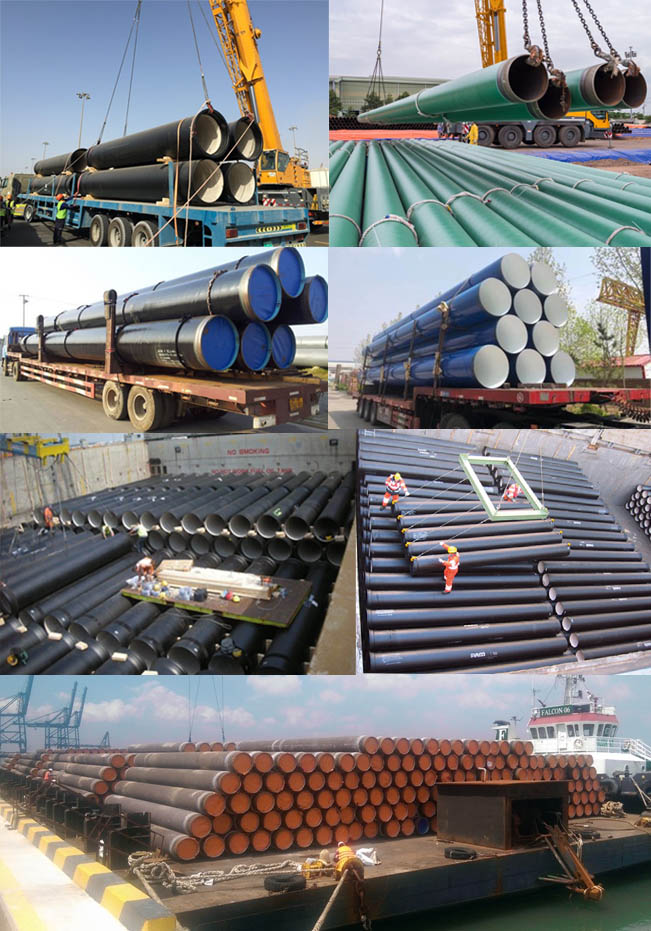
Equivalent Grades Of Nickel Alloy Seamless Tubes
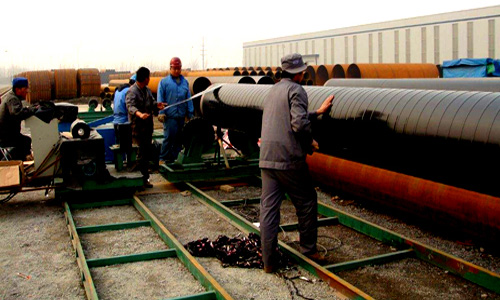
| Alloy | ASTM Specification | Material-No. | DN-Trade Name | UNS-No. | DIN Specification |
| Nickel 201 | ASTM B160 | 2.4068 | NR-Nickel 99 | N02201 | DIN 17740 |
| Ni99.6 | 2.4060 | BR- Nickel 99.6 | DIN 17740 | ||
| Nickel 200 | ASTM B160 | 2.4066 | R-Nickel 99.2 | N02200 | DIN 17740 |
| LC-Ni99.6 | 2.4061 | NR-Nickel 99.6 | DIN 17740 |
Standard of Anti-corrosion Pipe
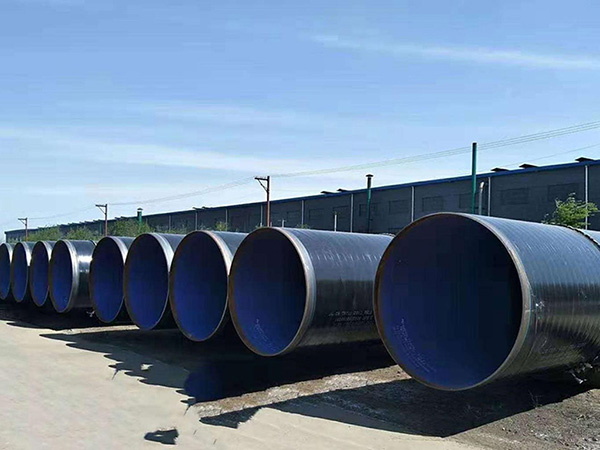
1.ANSI*/AWWA C203—Coal-Tar Protective Coatings and Linings for Steel Water Pipe.
2.ANSI/AWWA C205—Cement-Mortar Protective Lining and Coating for Steel Water Pipe——4 In. (100 mm) and Larger——Shop Applied.
3.ANSI/AWWA C208—Dimensions for Fabricated Steel Water Pipe Fittings.
4.ANSI/AWWA C209—Cold-Applied Tape Coatings for Steel Water Pipe, Special Sections,Connections,and Fittings.
5.ANSI/AWWA C210—Liquid-Epoxy Coatings and Linings for Steel Water Pipe and Fittings.
6.ANSI/AWWA C213—Fusion-Bonded Epoxy Coatings and Linings for Steel Water Pipe and Fittings.
7.ANSI/AWWA C214—Tape Coatings for Steel Water Pipe.
8.ANSI/AWWA C215—Extruded Polyolefin Coatings for Steel Water Pipe.
9.ANSI/AWWA C216—Heat-Shrinkable Cross-Linked Polyolefin Coatings for Steel Water Pipe and Fittings.
10.ANSI/AWWA C217—Microcrystalline Wax and Petrolatum Tape Coating Systems for Steel Water Pipe and Fittings.
11.ANSI/AWWA C218—Liquid Coating Systems for Aboveground Steel Water Pipe and Fittings.
12.ANSI/AWWA C222—Polyurethane Coatings and Linings for Steel Water Pipe and Fittings.
13.ANSI/AWWA C224—Nylon-11-Based Polyamide Coatings and Linings for Steel Water Pipe Fittings.
14.ANSI/AWWA C225—Fused Polyolefin Coatings for Steel Water Pipe. ANSI/AWWA C229—Fusion-Bonded Polyethylene Coatings for Steel Water Pipe and Fittings.
15.ANSI/AWWA C602—Cement-Mortar Lining of Water Pipelines in Place———4 In.(100 mm) and Larger.
16.DIN3067—Polyethylene coatings of steel pipes and fittings —requirements and testing.
17.DIN30671—Thermoset plastic coatings for buried steel pipes
18.DIN3067—Coatings of corrosion protection tapes& heat shrinkable material for underground pipelines
19.DIN30678—Polypropylene coatings for steel pipes
20.DIN2614—Cement motar linings for ductile iron and steel pipes and fittings—application,requirements and testing
21.NF A49-710—Steel tubes.External coating with three polyethylene based coating.
22.NF A49-704—Polyethelene outer coating
23.AS1281—Cement mortar lining of steel pipes and fittings
24.NFA49-705—Steel tubes. External polyethylene coating. Application by powder sintering
25.AS1518—Extruded high density polyethylene protective coating for pipes
26.CAN/CSA-Z245.20—External Fusion Bond Epoxy Coating for Steel Pipe
27.BS EN10290-2002—Steel tubes and fittings for onshore and offshore pipelines. External liquid applied polyurethane and polyurethane-modified coatings
Standards for Anti-Corrosion Pipes
There are several international standards that define the specifications for anti-corrosion pipes. These standards provide guidance on the materials, design, manufacturing, testing, inspection, and coating procedures to ensure the durability and effectiveness of the anti-corrosion pipes. Here are some of the widely accepted standards:
1. ISO (International Organization for Standardization)
- ISO 21809-1: This standard specifies the requirements for the qualification, application, testing, and handling of materials for plant-applied single layer fusion-bonded epoxy (FBE) external coatings for the corrosion protection of bare steel pipe for use in pipeline transportation systems for the petroleum and natural gas industries.
- ISO 21809-2: This standard specifies the requirements for the 3PE system (a three-layer polyethylene coating), applied by extrusion, for the external anti-corrosion coating of buried or submerged pipelines.
2. DIN (German Institute for Standardization)
- DIN 30670: This standard specifies requirements for factory-applied three-layer extruded polyethylene-based coatings, and one- or multi-layered sintered polyethylene-based coatings for the corrosion protection of steel pipes and fittings.
3. NACE (National Association of Corrosion Engineers)
- NACE RP0394: This standard provides guidelines for the use of protective coatings as a part of corrosion control in underground systems.
- NACE SP0188: This standard provides guidelines for the application of protective coatings in immersion service.
4. ASTM (American Society for Testing and Materials)
- ASTM A106: This standard covers the seamless carbon steel pipe for high-temperature service.
- ASTM A252: This standard covers nominal (average) wall steel pipe piles of cylindrical shape and applies to pipe piles in which the steel cylinder acts as a permanent load-carrying member.
5. API (American Petroleum Institute)
- API 5L: This standard specifies requirements for the manufacture of two product specification levels (PSL 1 and PSL 2) of seamless and welded steel pipes for use in pipeline transportation systems in the petroleum and natural gas industries.
- API RP 5L2: This standard provides guidelines for pipeline coatings and linings.
These standards aim to ensure the quality and durability of anti-corrosion pipes. They are crucial for industries such as oil and gas, water treatment, chemical processing, and infrastructure development, where pipes are exposed to harsh and corrosive conditions.
